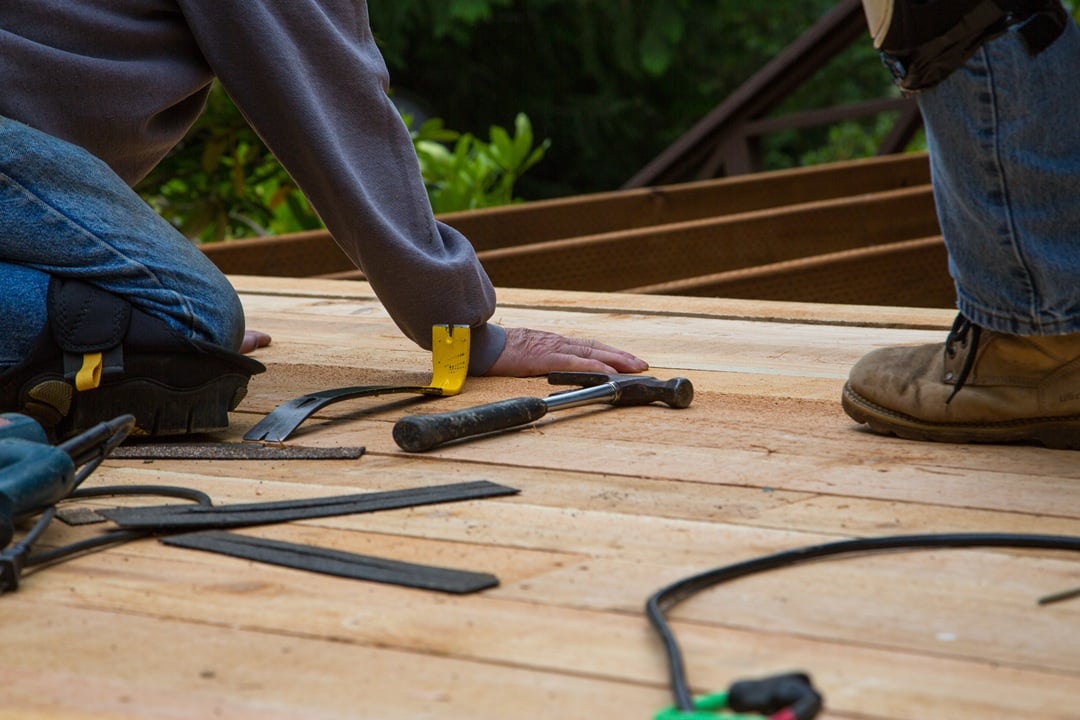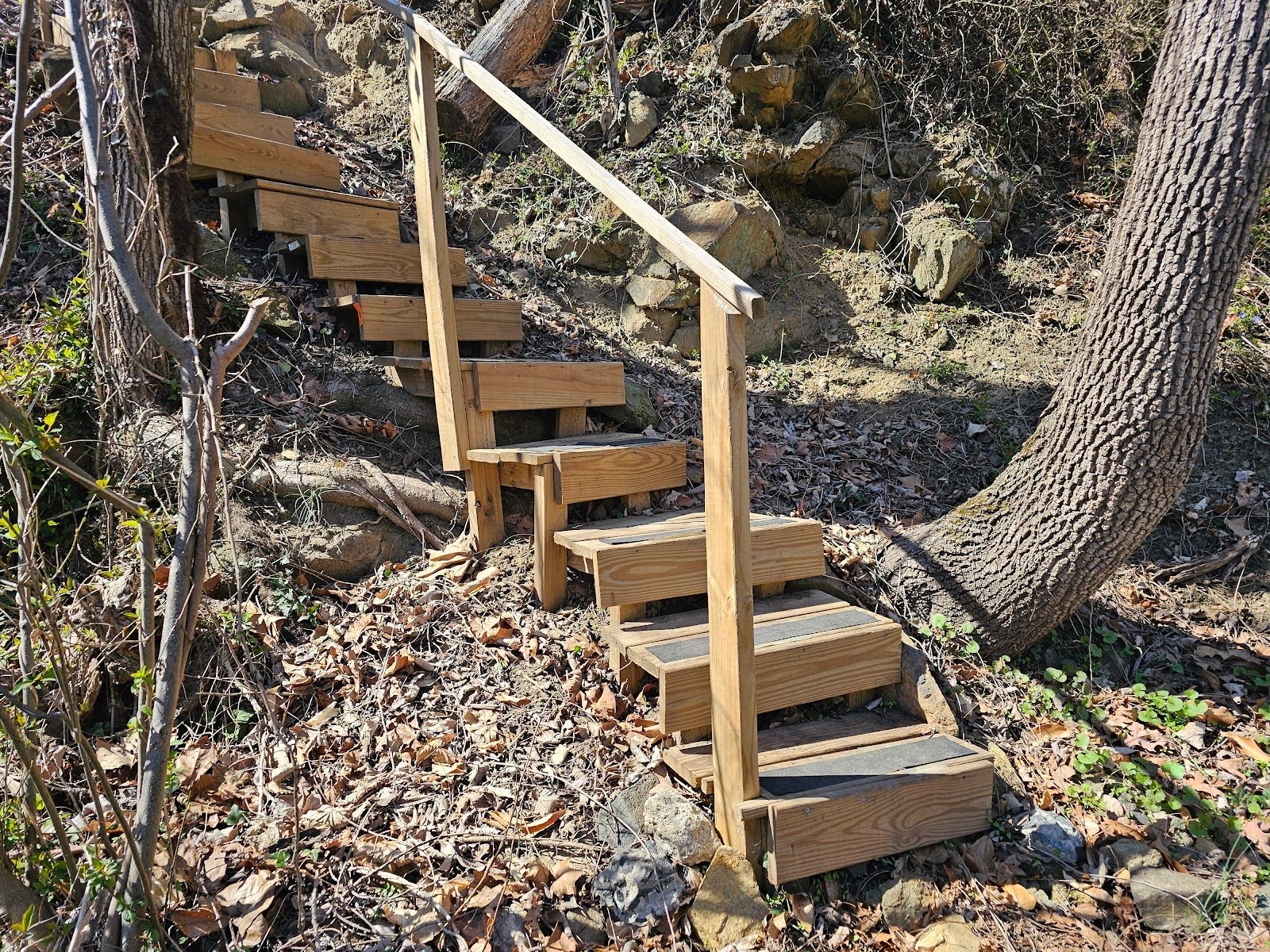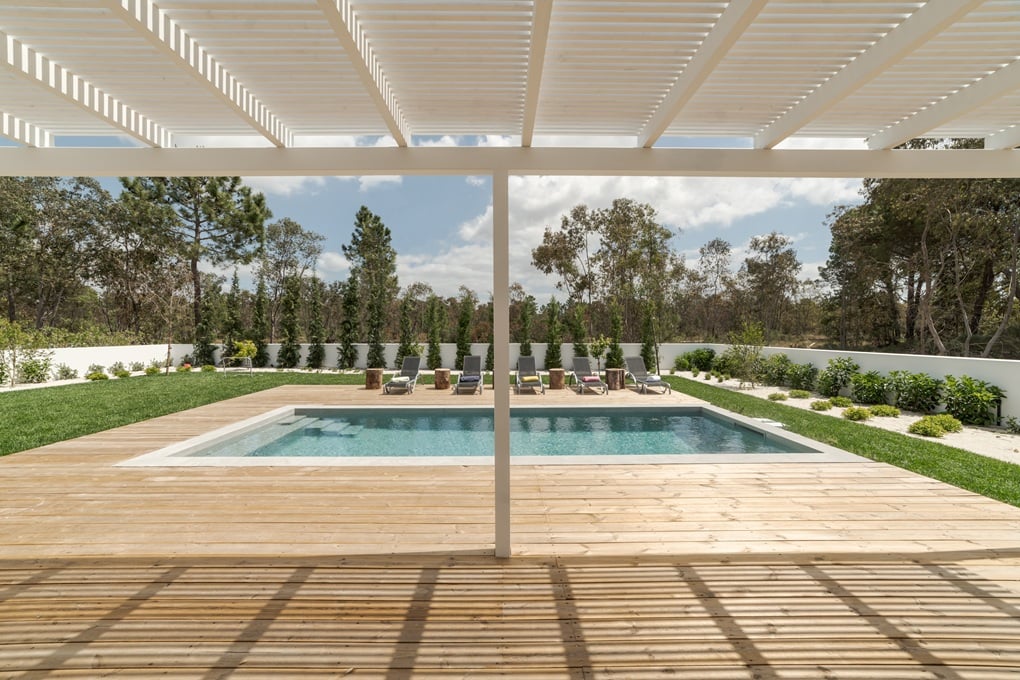Deck stairway framing with midlanding
Today, we’re looking at the underside of a wood frame deck, but unlike a typical deck, this is not a deck at a back of a house used for a dining or gathering space off of the kitchen. Instead this deck is used for a more common and practical purpose. This deck is a assembly of Landings and stairways that leads to an entrance of the building. Although this particular deck has a relatively ample area, it’s not really practical to use the space for much more than a passageway. We’ll still look at the underside of this deck to understand the elements of the framing and discuss some of the applicable types of best practices in deck construction.
Here on our website, we’ve looked at a variety of different decks, some are old and the lapidated and others are new but sometimes other contractors don’t follow the Contemporary or modern rules for debt construction and we’ve highlighted a lot of those defects in installation. Here though today, we’re looking at a deck that’s built pretty well, and we’ll show those details.

The picture below shows one subsection of the underside of the midlanding and stairway. Within this view, here, you can see several components of the deck and post including the rim joist at the outside edge from which the deck joists are connected and hung. They’re essentially supported by fastening and hanging from that rim joist, set perpendicular.
The individual intermediary joists within the area below the field of the deck support the weight from foot traffic and anything on top of the deck. But the weight is transferred from the intermediary joints in the middle of the field out to the rim joist and then from there that load is then transferred down to the posts. The posts then carry that load down to the footings below. So even though the deck boards themselves don’t appear to be part of the structural load path, in terms of a live load, they do support and transfer directly to the load path.

You can see that the four main posts of the midlanding are 6×6 pressure treated lumber. Posts of that size, in this case larger than 4×4, are sufficient for this type of structural load. However, normally, in circumstances like, where posts are used at the corner of a deck to transfer the structural load from the deck down to the footings below, we recommend shouldering the rim joist into the post.
That supports the joist in a bit more of a stable configuration. When a joisty shouldered into the top of a post, it doesn’t compromise the strength of the post the same way it would if the post were being notched. A notch is like a dado or a part of the center of a vertical post that is removed, that can debilitate a post, at least a little bit. In this case though, a notch would be similar to setting a joist on top of the post, but instead of just being on the top, it’s also supported at the side, in addition to being supported at the bottom.
In the picture below, you can see the top of the post extends out from a vinyl sleeve at the bottom. The vinyl sleeve essentially has little to do with the functional characteristics of the deck. It may add a little bit of protection from the elements. Particularly, the sleeve can protect the wood from the deleterious and damaging effects of ultraviolet rays, but it doesn’t completely help protect the post from the effects of moisture because moisture can still enter at the ends of the sleeve.
Once moisture enters into the ends of the sleeve, either from precipitation or from rising damp or absorption of moisture below, that moisture does not leave easily. The sleeve is a vapor barrier but that vapor barrier, since it’s not sealed at the ends, works a bit like a double-edged sword. It doesn’t let as much moisture in, but it doesn’t let as much moisture out either.

Use a contractor who understands and cares about doing things right. Always, feel free to reach out to us here at Dupont Decks and Patios. We are happy to help with almost all steps of the deck building and design process. A backyard and outdoor space should make a significant, positive impact on both quality of life and home value. We can help with more than just decks, we also build patios, pergolas, ramadas, awnings, gazebos, arbors, and privacy fences.
This coming week will continue looking at different aspects of this deck including the vinyl covering at the posts and elements of the guard rail.
Let us know about your ideas and talk to us if you have questions about possibilities. We are happy to participate in improving your outdoor space and quality of life! You can call us at (202) 774-9128. You can find us online at https://dupontdeckspatiosdc.com and you can email us there as well at https://dupontdeckspatiosdc.com/contact-us




